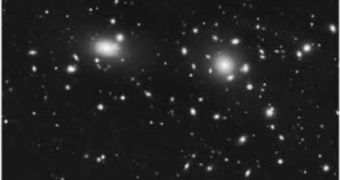The Deep Sky Project is an ambitious initiative, conducted by astronomers, engineers and computer scientists from the National Energy Research Scientific Computing (NERSC) Center, with the purpose of making an incredibly large astronomical database available to researchers around the world. After more than a decade of operation, the NERSC currently receives approximately 3,000 files each night, from automated sky-scanning systems around the world, and, thus far, it has accumulated some 8 million images, which it plans to make available for anyone interested.
The goal of the DSP is to create a user-friendly database system and interface, one that would make it easier for the large number of astronomers and other researchers to find relevant information and high-resolution pictures at a moment's notice. The multi-disciplinary team also hopes to make their database model one that would be duplicated around the world for other research fields as well, such as physics, chemistry, natural science, and so on.
“The whole concept of this project is to efficiently streamline access to massive amounts of data on NERSC's computers, basically providing a nice portal to astronomy data that we have acquired over the years,” NERSC Analytics Group Computational Research Division (CRD) Scientific Computing Group staff scientist Peter Nugent, who is also the DSP project leader, explains.
“One of NERSC's overriding goals is to help scientists store, process, manage, search and retrieve the ever-vaster data sets that are being produced in almost all areas of science,” NERSC Analytics Group and the Computational Research Division's (CRD's) Data Intensive Systems Group member Cecilia Arago, who is also the DSP software infrastructure leader, adds.
“As an astronomer, instant access to the Deep Sky dataset is extremely valuable. I can search the images for potential events – supernovae or gamma ray bursts – by looking for dots that appear for a while and then disappear. I can then follow up on any oddities with even more powerful tools like NASA's Hubble Space Telescope to find out what is really going on,” Nugent shares.
He goes on to say that, “Co-adding a variety of pictures of the same piece of sky not only allows us to better see faint objects, it also allows us to spot changes in the sky. If a bright spot has moved from one image to the next, it could be an asteroid, comet or planet; if a spot appears in a few images and then disappears, it could be cosmic event like a supernova.”
“The Deep Sky system is going to be quite important as the Palomar Transient Factory (PTF) progresses because it shows us everything that was observed before and allows us to follow up on what is new,” California Institute of Technology (Caltech) postdoctoral fellow Robert Quimby, who is also the software lead of the Palomar Transient Factory, concludes.

 14 DAY TRIAL //
14 DAY TRIAL //